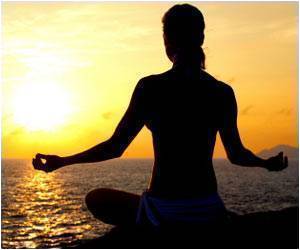Yoga props like mats, knee pads, straps, and yoga blocks can help you perfect your form so you can practice yoga efficiently and safely.
- Yoga is a holistic approach to health and boasts multiple benefits
- While yoga can be pretty easy to do, props can help beginners perfect their form to avoid injury
- Some of these props include yoga mats, yoga blocks, yoga belts, and knee pads
Exploring the therapeutic effects of yoga and its ability to increase quality of life
Go to source).
Yoga: intuition, preventive medicine, and treatment
Go to source).
It has also been linked to reducing obesity, migraines, stress, and back pain.
What Props can You Use for Yoga?
A yoga prop is an object that makes practicing yoga easier and more effective. Yoga props can improve the safety and effectiveness of poses for practitioners of all skill levels. But they’re especially great for helping beginners to complete postures that would otherwise be challenging.Yoga Props You Need for Your Next Yoga Session
Yoga props can make your life easier while practicing yoga. Consider these for your next session:Yoga Mats
Can you imagine doing yoga without a mat? A yoga mat is the most important prop for yoga. Mats provides padding for body regions that come into contact with the floor and provide a gripping surface to prevent slipping during postures.
Mats come in a variety of thicknesses; a thinner mat aids in improving stability during dynamic and balanced-based yoga poses, whilst a thicker mat is better for therapeutic postures and can comfort those with sore joints due to its additional padding.
Yoga Blocks
The materials for these brick-shaped items include foam, cork, wood, and bamboo. You can maintain appropriate posture, deepen stretches, and increase stability with the aid of yoga blocks.
Yoga Straps
Yoga straps, commonly referred to as yoga belts, are helpful for users who have tight shoulders and hamstrings. Straps aid in appropriate alignment and allow you to safely perform postures that are outside the scope of your flexibility.
Yoga Blankets
For alignment and support, especially during restorative positions, a yoga blanket is used. To suit your needs, yoga blankets—which are often made of cotton—can be rolled, folded flat, or pleated.
Knee Pads
A yoga knee pad can provide relief for your knees when performing kneeling postures as well as for your forearms when performing positions like the dolphin or plank.
Yoga Wedges
A tapered yoga block known as a wedge can be used to alter the angle of your hands, feet, or pelvis on the mat. Wedges support your joints and are beneficial for those with plantar fasciitis or arthritis. The heel of your hand can be angled at an angle with a wedge if you have a wrist injury to reduce pressure.
Yoga Bolsters
To add additional support and accessibility, you can position a long, narrow cushion under various portions of your body. Unlike pillows, bolsters are firmer and do not flatten out. When in Savasana, hero pose, or a backbend, you can place a bolster beneath your head, seat, or your neck and back.
For restorative yoga positions that are held for extended periods of time, bolsters are extremely helpful.
Yoga Wheel
A huge hollow wheel known as a "yoga wheel" can be used to stretch and loosen up tight muscles in the back, abdomen, hips, and chest. To roll out your spine, you can also utilize a yoga wheel.
The majority of yoga wheels are composed of plastic or wood, and some even include cork interior lining for added traction. Yoga wheels are intended for more experienced practitioners, so beginners may want to become accustomed to using alternative props first.
Always remember quality over quantity. It is not about how many times you can perform a pose but your form is what matters. Be safe and if you suffer from any pre-existing medical condition, it might be better to get your physician's get-go before starting yoga. You can even hire an instructor initially and go independent after.
References:
- Exploring the therapeutic effects of yoga and its ability to increase quality of life - (https://www.ncbi.nlm.nih.gov/pmc/articles/PMC3193654/)
- Yoga: intuition, preventive medicine, and treatment - (https://pubmed.ncbi.nlm.nih.gov/9773368/)
Source-Medindia















